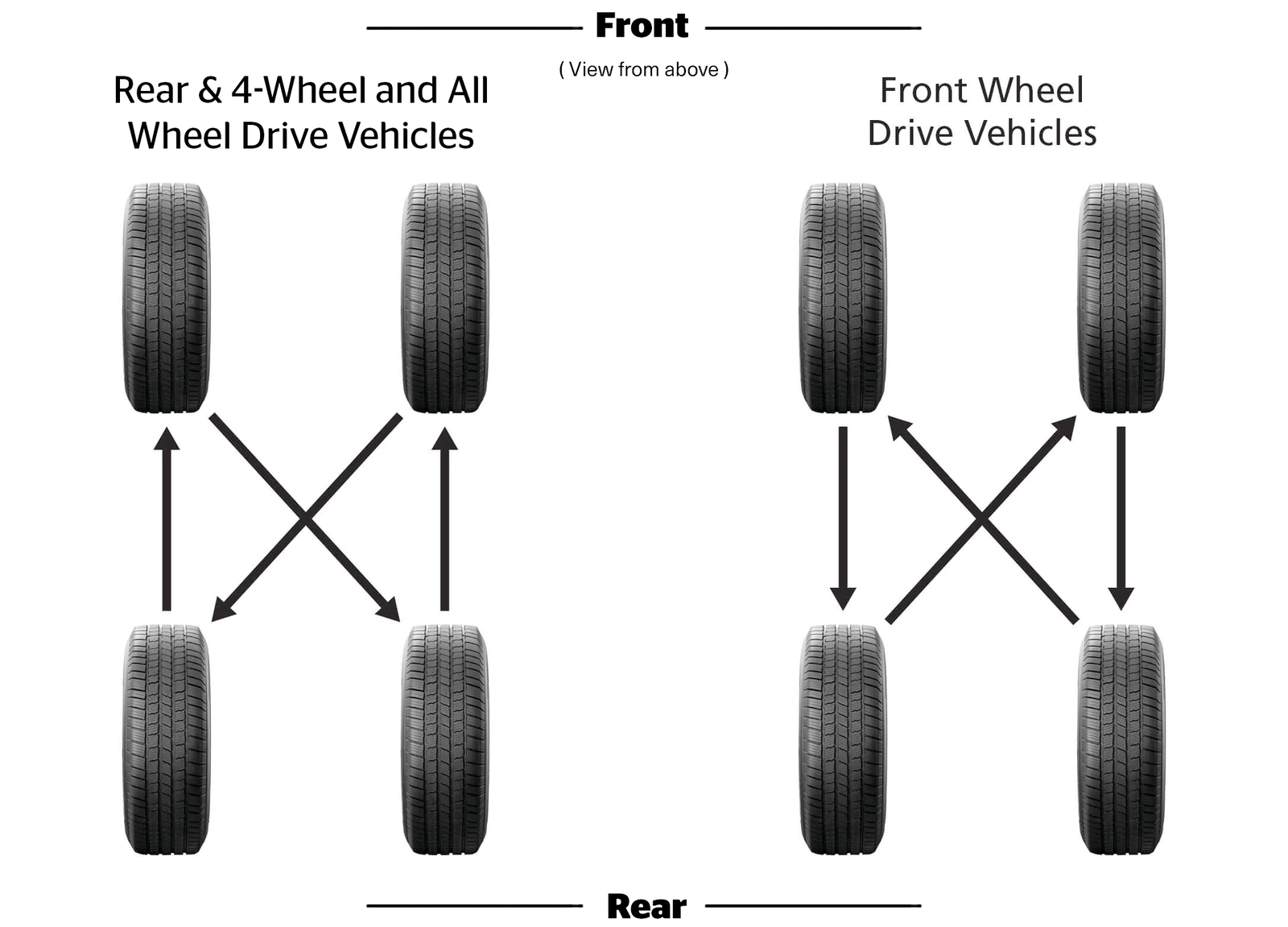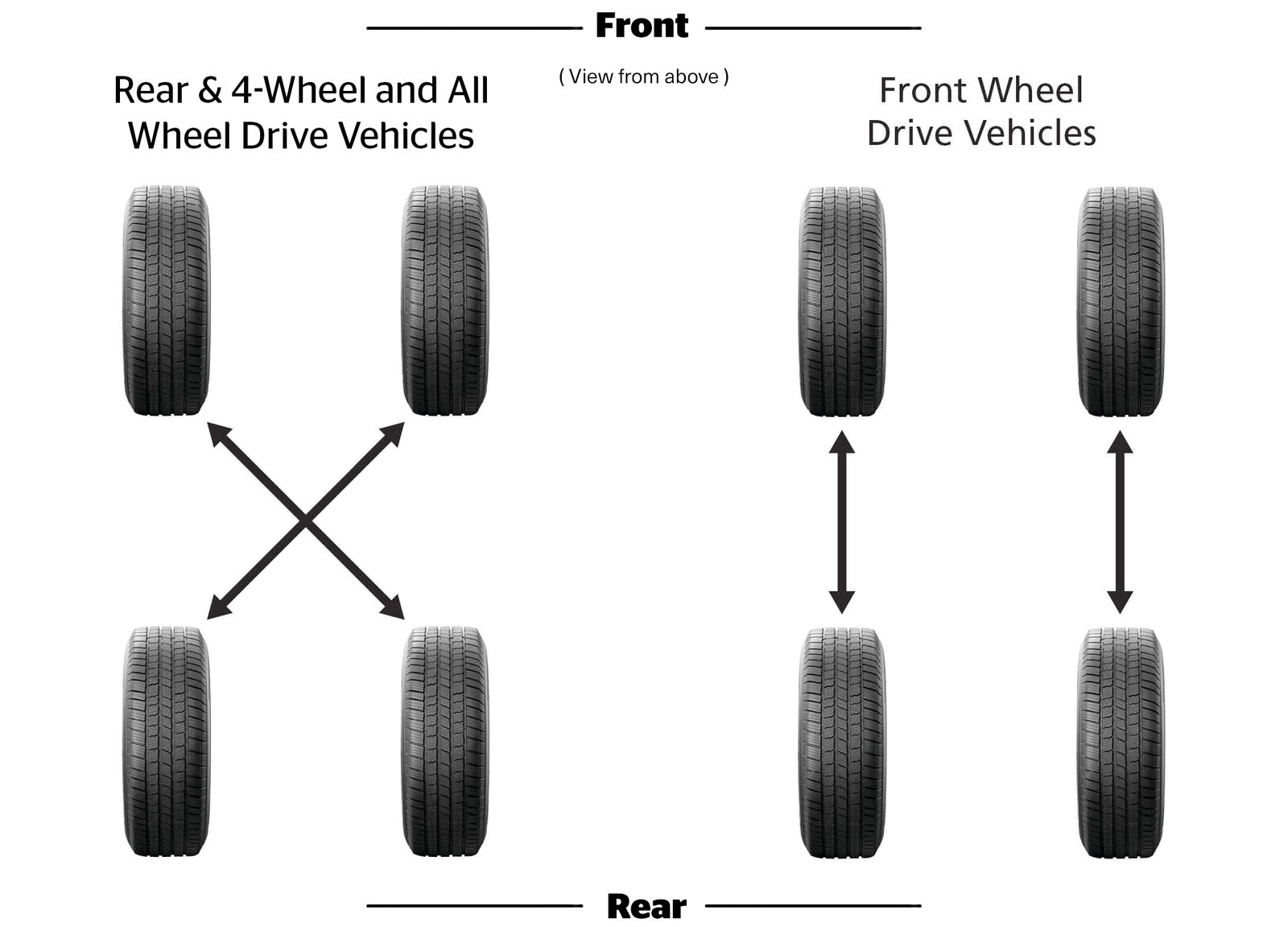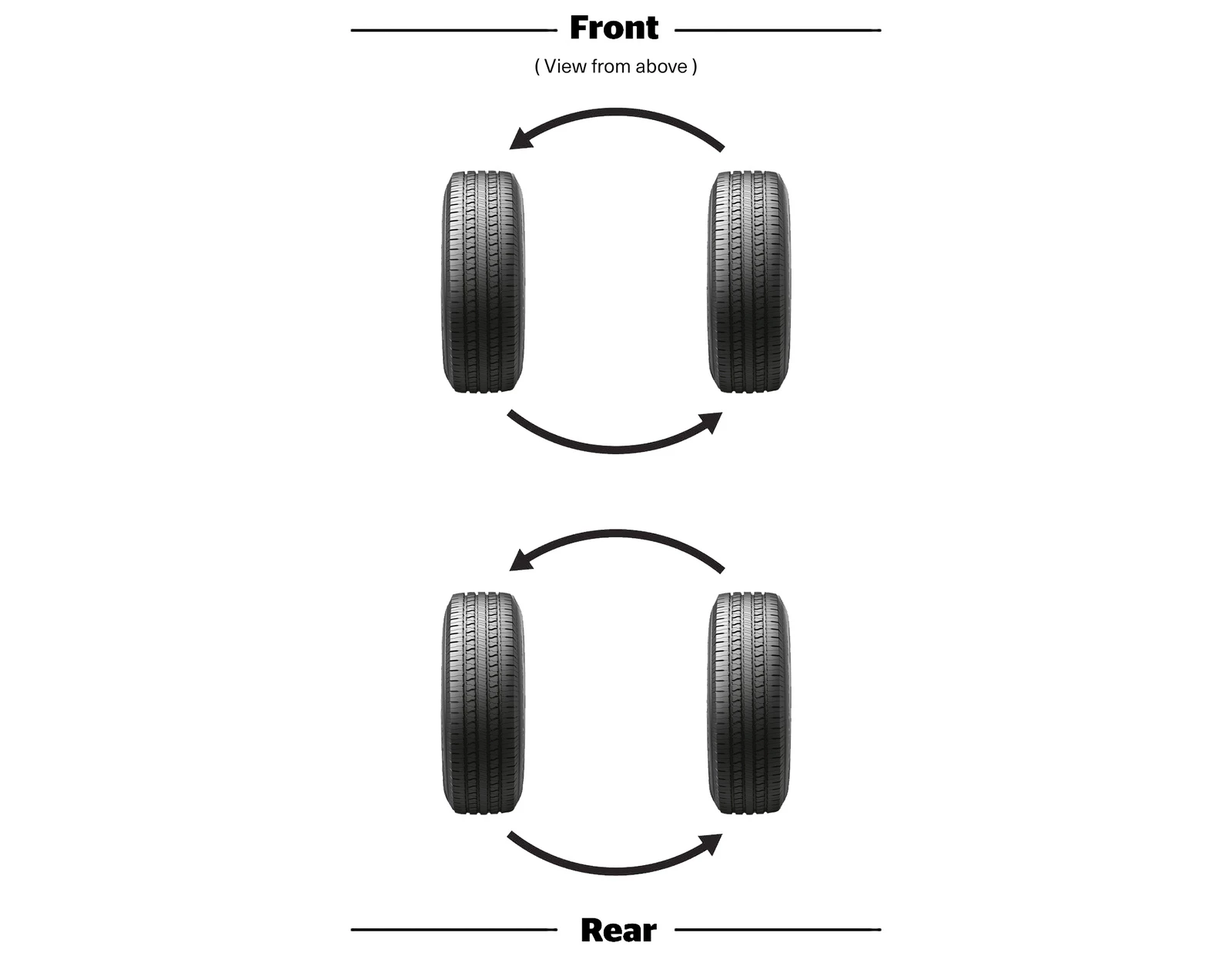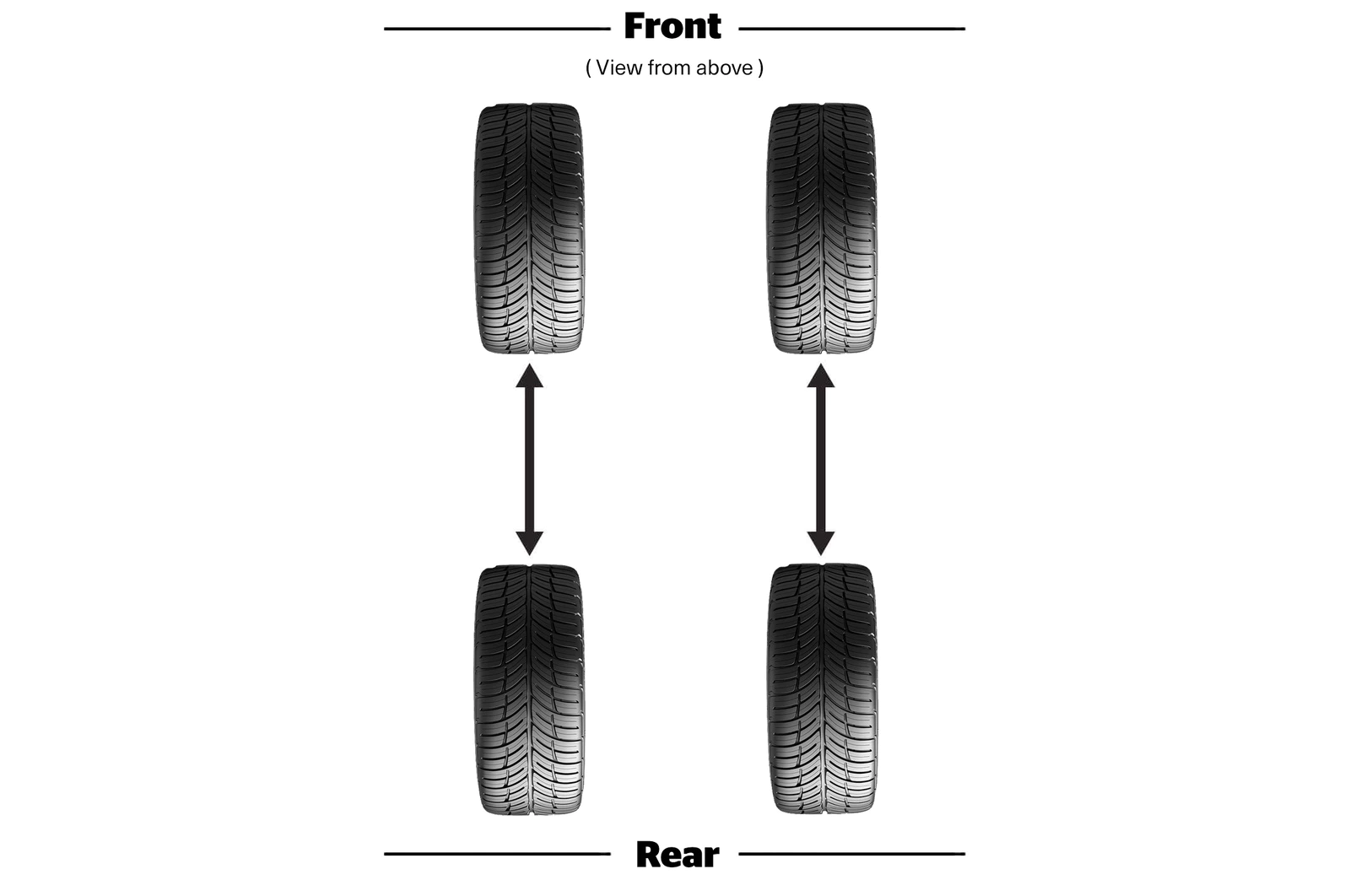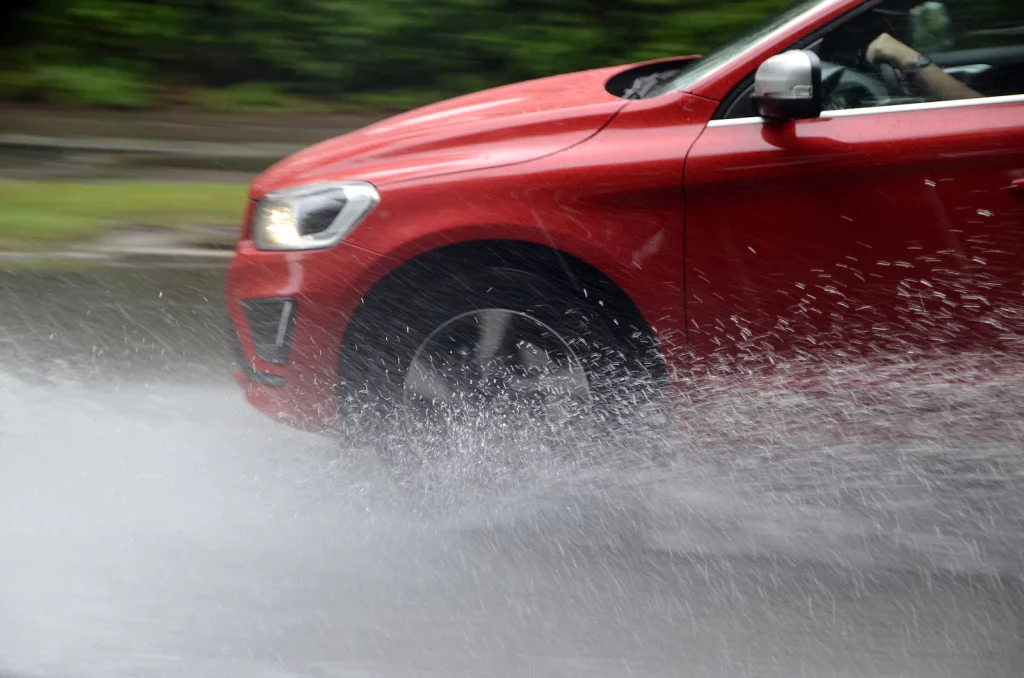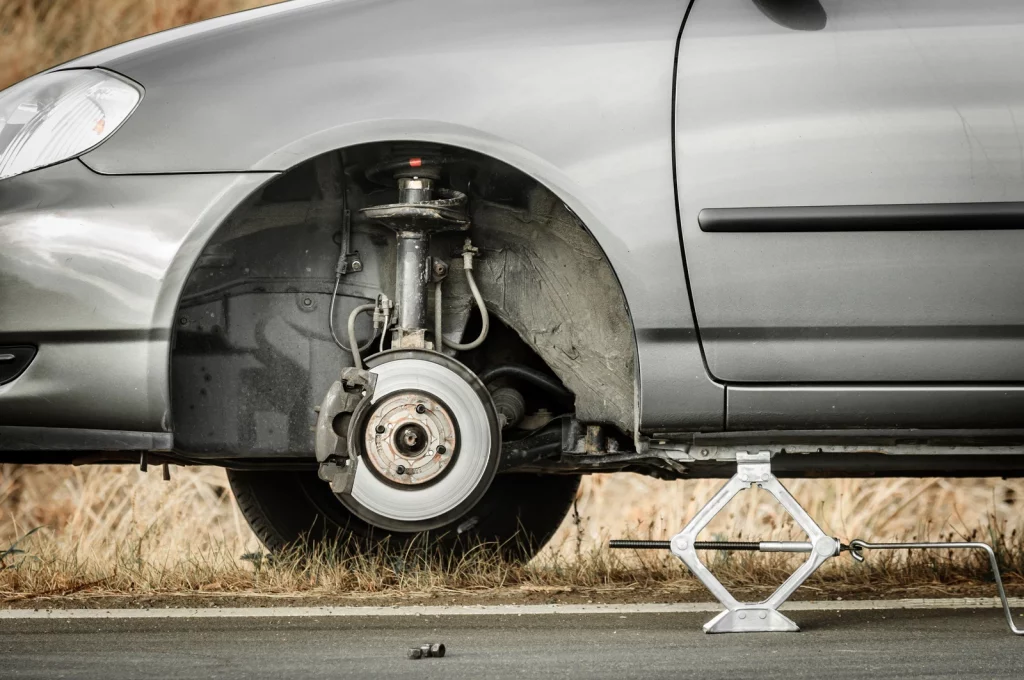Tire Service
Tires are a vital part of your vehicle and the only thing between you and the road.
Ensuring your tires are properly maintained will keep you safe and save you money. Keeping them properly inflated, rotating them regularly, and monitoring them for tread wear will maximize the life of your tires, improve your fuel efficiency, and improve your vehicle's driving performance while minimizing your need to change your tires under emergency situations.
How to Check Tire Pressure
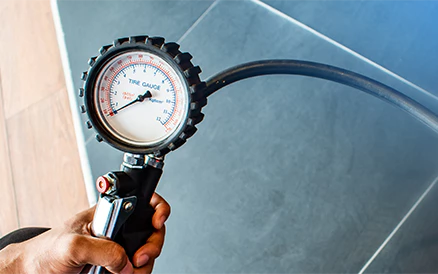
Believe it or not, tires can actually lose up to 1psi (pounds per square inch) every month. So be on the safe side and check all tires, including your spare, once a month (or before a long trip). It's no biggie. Here's how you do it:
- Purchase a trusted pressure gauge.
- Check your tires "cold" - before you've driven or at least three hours after you've driven.
- Insert pressure gauge into the valve stem on your tire. (The gauge will "pop" out and show a measured number. When you hear a "pssst" sound, that's air escaping the tire. The escaping air shouldn't affect pressure substantially unless you hold down the air pressure gauge too long.)
- Compare the measured psi to the psi found on the sticker inside the driver's door of your vehicle or in owner's manual. DO NOT compare to the psi on your tire's sidewall.
- If your psi is above the number, let air out until it matches. If below, add air (or have a BFGoodrich Tires dealer help you) until it reaches the proper number.
nitrogen versus compressed air
It's pretty common knowledge that most tires are filled with compressed air. But some tire dealers have started putting nitrogen in their customer's tires. (Nitrogen is simply dry air with the oxygen removed. Air contains nearly 79% nitrogen already. Note: Welcome to science class.) Because nitrogen replaces oxygen, less air can escape your tires, and your air pressure stays higher for longer. Also, know that nitrogen and compressed air CAN be mixed, if needed.
Unfortunately, there are other possible sources of leaks (tire/rim interface, valve, valve/rim interface and the wheel), which prevent the guarantee of pressure maintenance for individuals using air or nitrogen inflation. Tires manufactured by BFGoodrich Tires are designed to deliver their expected performance when inflated with air or nitrogen, as long as, the user respects the pressures recommended by the vehicle manufacturer on the vehicle's placard or by the tire manufacturer.
How to Inspect Tread Depth
Once every month, or before you embark upon long road trips, check your tires for wear and damage problems. One easy way to check for wear is by using the penny test. All you have to do is grab your spare change and follow 3 easy steps.
1. Take a penny and hold Abe's body between your thumb and forefinger.
2. Select a point on your tire where tread appears the lowest and place Lincoln's head into one of the grooves.
3. If any part of Abe Lincoln's head is covered by the tread, you're driving with the legal and safe amount of tread. If your tread gets below that (approximately 2/32 of an inch), your car's ability to grip the road in adverse conditions is greatly reduced.
TO MAKE SURE YOUR CAR'S TREAD IS ROAD-READY, DO THE PENNY TEST BELOW
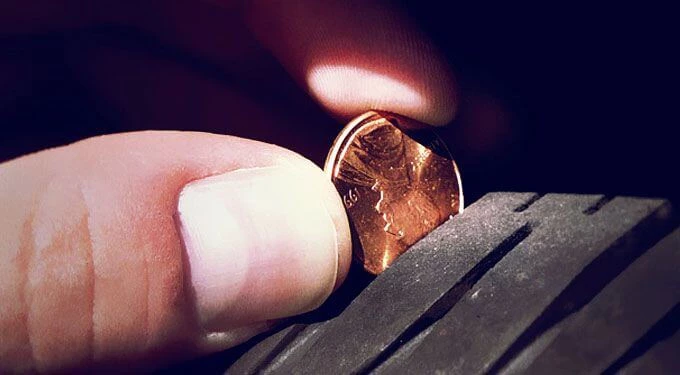
Tire Care Products
Nothing makes a car look sweeter than a shiny set of tires. But don’t put your investment at risk by using just any cleaner. Make sure to only use acid-free products. A number of wheel cleaners may contain harsh acids, alkalis and/or detergents that can damage wheels and paint. However, there are products out there that are safe for all brands of tires as well as environmentally responsible. You can find them at an auto parts dealer near you.
Tire Balance
WHEN TO BALANCE
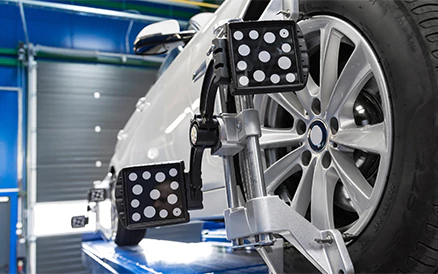
Tire balancing is pretty much what it sounds like. It compensates for the weight of the tire and wheel assembly after the tire is mounted. A wheel is out of balance when one area is heavier or lighter than the rest. That causes bouncing or wobbling, which can decrease treadwear, increase vibration and cause stress on your vehicle. The cure? Correction weights are added to counterbalance the tires.
- A tire is replaced
- A balance weight is moved or removed
- You purchase new tires
HOW WHEELS ARE BALANCED
Balancing a wheel is a cool process. Your mechanic uses a high-tech balancing machine to determine where the heavy spots are. Weights are then attached to the exterior or interior of the wheel to counteract centrifugal forces acting on the heavy areas when the wheel is turning. This will eliminate vertical bouncing and side-to-side wobble.
tire alignment
If you’re talking about alignment, you’re talking about the adjustment of a vehicle's front and rear suspension parts. And it needs to be correct. If the alignment is off, the vehicle isn’t safe to drive. View the animation below to understand the three main adjustments made during alignment:
WHEN TO CHECK ALIGNMENT
Yes, those never-ending potholes and bumpy railroad crossings are seriously annoying. But they, along with more severe circumstances like a car accident, can knock your vehicle out of alignment. So, be sure to have your alignment checked if:
- You’ve hit something substantial
- You see a wear pattern developing on the shoulders (outer edges) of the tires
- You notice a difference in your vehicle’s handling
Tire Rotation
The truth is the whole rotating-your-tires thing is a no gimmick. It really does help extend the life of your tires and improve performance. So, if you're into safety and saving money, check out the four main rotation patterns below.
Passenger & 4-Wheel and all wheel drive light trucks
Dual Wheel Rotation Patterns
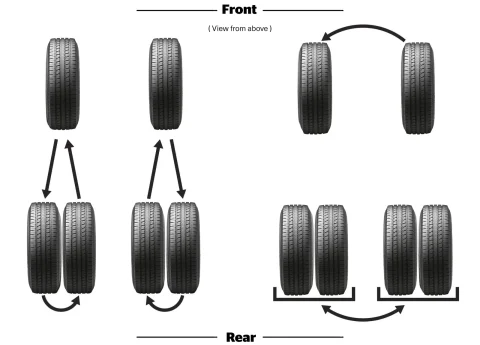
5 Tire Rotation Patterns
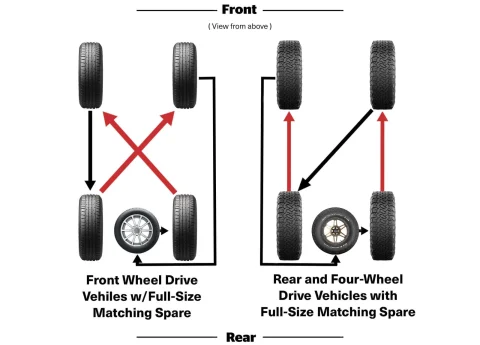
NEED MORE HELP TO PLAN A TRIP
Our Trip Planning section gives lots of helpful information to get you started.




